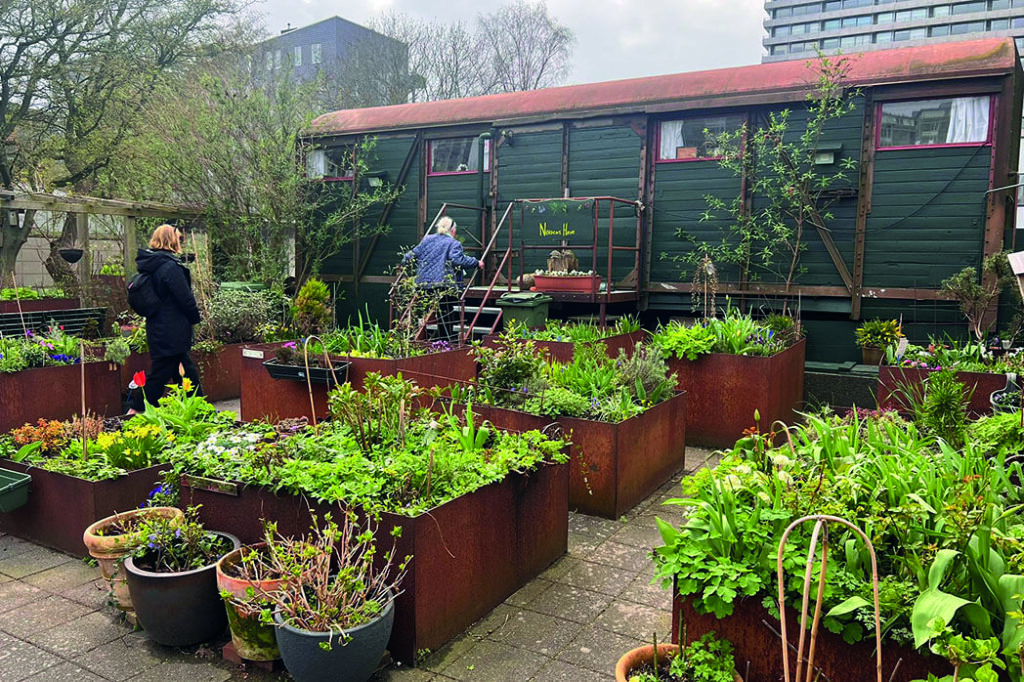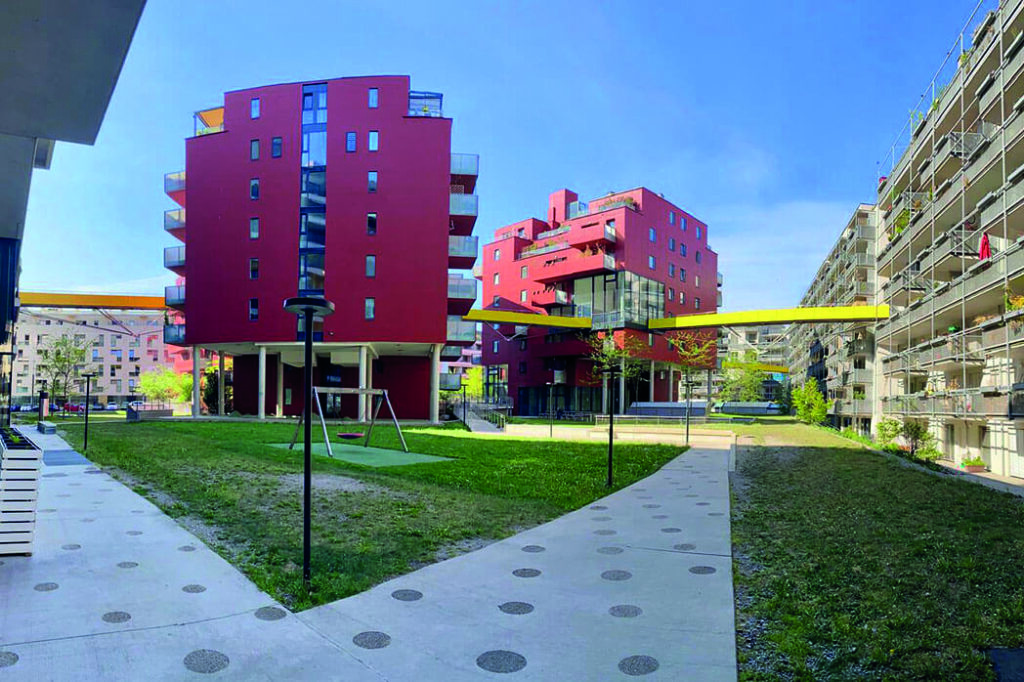In April 2024, Europe played host to a delegation from Australia’s Business Council of Cooperatives and Mutuals (BCCM), taking a fact-finding tour of co-operative housing models in Copenhagen, Vienna and Zurich.
Their goal was to uncover innovative solutions to Australia’s housing affordability crisis, because, says BCCM CEO Melina Morrison, “affordable housing is a bedrock for sustainable, healthy and happy communities”.
“What we saw [in Europe] was astounding but not out of reach,” she adds. “Instead of thinking only about private ownership, housing policy in Denmark, Switzerland and Austria is led by the idea of affordability.”
The housing sector in Australia is a mix of private and social housing. Social housing is split into three: public housing (built, owned and managed by state governments, which act as landlords), community housing (usually managed – and sometimes built by – not-for-profit community housing associations in partnership with state governments) and affordable housing (rented below market rates to people who struggle in the private market).
In May, the Federal Government’s budget included Aus$6.2bn (£3.25bn) of new investment in affordable housing. But, says Morrison, more can and should be done.
Related: Interview with Blase Lambert, Confederation of Co-operative Housing
“Co-operative housing has been successfully used to assist thousands of Australians into homes that offer the security of tenure and a sense of community without the need for crippling mortgages that become a burden to service. There is an opportunity for co-op housing to help solve the national crisis.”
And knowledge of the sector is growing. After a national co-operative housing roundtable in the Federal and NSW Parliaments, a submission to the housing and homelessness taskforce and an advocacy push, co-operative housing is now being recognised as a form of housing tenure in Australia. Released on 3 May 2024, the State of the Housing System Report includes housing co-operatives as a form of housing in Australia, and the BCCM is now developing a three-five year Affordable Housing Strategy “to ensure the mutual sector has coherent strategies to influence housing policy further”.

Australia has around 8,000 people living in co-operative housing, with four of its six states (New South Wales, Victoria, Western Australia and South Australia) supporting co-op housing through federations. But it currently represents less than 1% of the total housing stock in Australia compared to European countries where it is as high as 45% of all housing.
Lessons from Europe
Participants in the tour to Europe included representatives from co-operative housing developers, academia, co-operative housing providers and Indigenous housing groups, finance and banking sectors, and the professions of architecture, town planning and design, who witnessed firsthand the transformative impact of co-operative housing on urban communities.
One of the resounding themes that emerged from the tour was the prioritisation of renters’ wellbeing. “The co-operative case studies we visited were designed first and foremost for people, not profit,” said Emily Taylor, associate at Core Collective Architects, who was part of the delegation. “This has led to better architectural outcomes, such as construction innovation, sustainability, generous communal spaces and homes that can be personalised by the people who live there.”
Related: Boost for housing co-ops in Canada’s federal budget
Another theme was the enabling policy environment, and innovative funding mechanisms that make co-operative housing scalable, including government housing funds, patient revolving loans and collaborative risk-sharing approaches between private, public and non-profit stakeholders.
In Copenhagen, BCCM delegates visited Nykredit, an associate member of the European Association of Co-operative Banks with over one million customers and more than 4,000 employees. As a co-operative bank, Nykredit operates with a distinct focus on serving the needs of its members and fostering financial inclusivity; there are approximately 500 affordable housing organisations in Denmark and Nykredit accounts for 40% of the financing in the affordable housing sector.

They also visited the largest affordable housing organisation in Copenhagen, KAB Huset, witnessing first-hand the power of tenant democracy in student/refugee accommodation, disability and seniors housing, refurbished and new-build housing.
“Denmark’s remarkable affordable housing system houses 22% of the population,” said one delegate. “Here, co-housing developments provide independent seniors housing in a community setting. Privacy is an important part of empowered housing, but community is also vital to combat loneliness and increase a sense of well-being.”
Vienna, Austria, also has a long history of providing affordable housing: currently around 40% of those living in Vienna are in limited-profit housing associations. Around 20% of the housing market comprises affordable rental co-operatives with strong public and private finance support.
The delegation visited Wien, Krakauer Strasse – a pioneering initiative at the forefront of affordable housing solutions in Vienna, providing sustainable, secure and inclusive housing options for residents of the city – and Wohnfonds Wien, a non-profit organisation that acts as a co-ordination point between property developers, homeowners and municipal departments.
“Visiting Vienna [was] humbling,” says Morrison. “We have so much to learn about the power of housing policy based on the principle of ‘affordable housing for all’ rather than ‘private ownership for some’. The private market is still strong, but with 70% of Vienna‘s population living in high-quality and affordable rental housing, it’s hard not to conclude that there are other successful ways to approach housing.”
In Switzerland, delegates learned how a quarter of rental housing in Zürich is co-operative. The Zürich model blends tenant democracy, co-ownership of the housing assets and mainstream and some limited public finance in the form of construction loans to generate one of the world’s most cohesive affordable housing systems.
“The result is beautiful developments built around community-shared green space, high-quality buildings, sustainable designs and shared resources,” says Morrison, “such as high-quality common laundries, kindergartens and care centres, bookable hot desk and meeting rooms, urban food gardens, and guest accommodation.
“Affordable housing is not means tested; people are expected to contribute some equity, but there are still subsidies for those who are housing vulnerable. This results in blended communities and less stigmatisation around housing choices that don’t involve private property speculative markets. People are happy and seem to be having a good time.”
She adds: “We return home armed with knowledge and insights into a viable model for affordable rental housing that offers residents the opportunity to rent like an owner. Huge thanks to the many kind hosts who provided such interesting insights
“The good news is that we have the knowledge and resources to seed these ideas back in Australia. Working with our co-operative housing peaks through ACHA and our finance mutual members, there’s so much we can do co-operatively to address the growing housing crisis in our cities and regional centres.”
Click here more of our special edition on housing and the co-op and mutual movements

